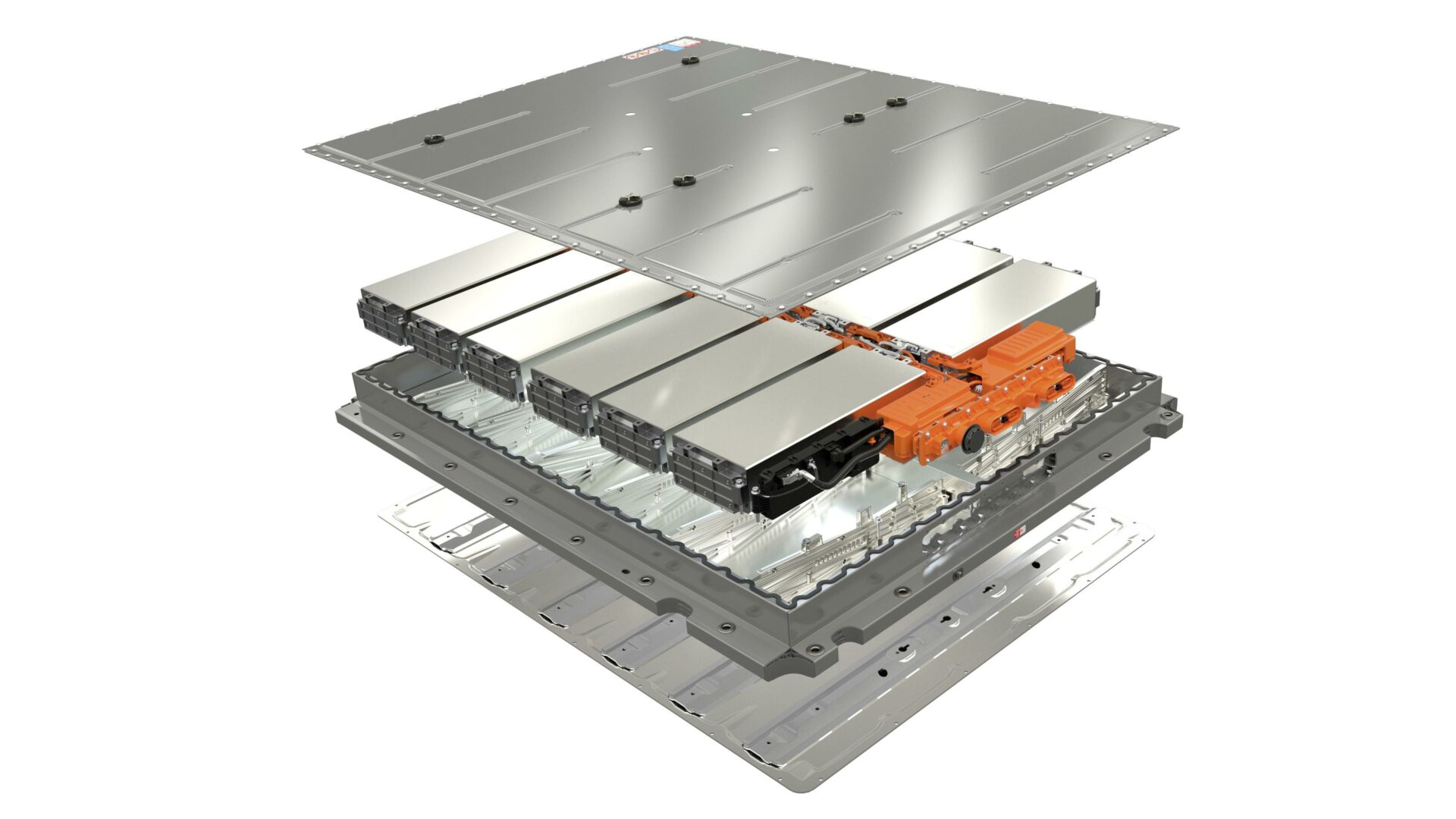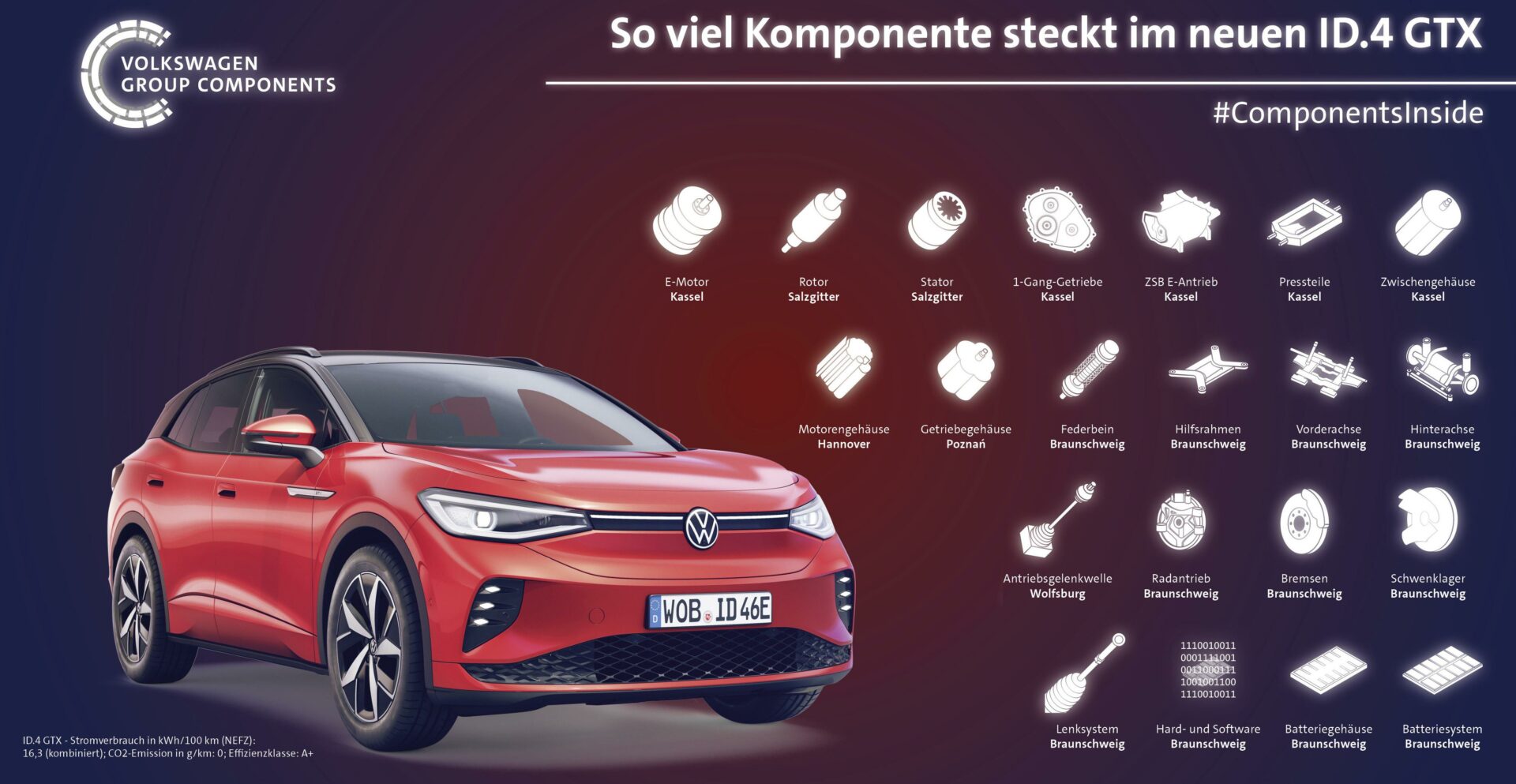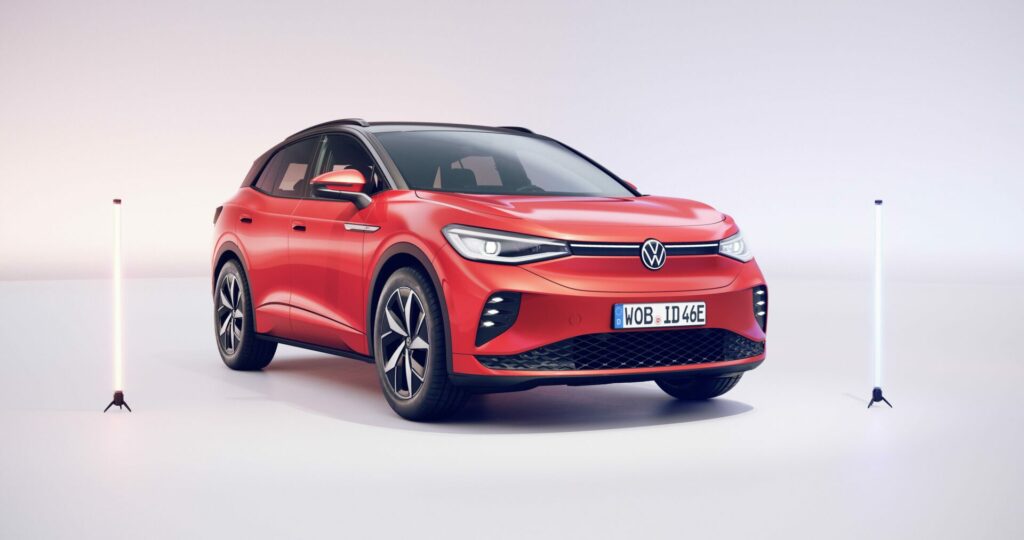What do the fully electric compact Volkswagen ID.3, the ID.4 and the high-performance model ID.4 GTX have in common? They all have cutting-edge battery technology that brings strong performance, long range, excellent safety and rapid charging.
Battery sizes from 45kWh to 77kWh
The compact ID.3 has a choice of three battery sizes. The compact version with 45kWh net energy content enables a range of up to 352km on a single charge (WLTP). With 58kWh, the range increases to up to 426km (WLTP). The large battery with a net energy content of 77kWh offers a maximum range of 549km (WLTP). The choice is similar for the ID.4: the E-SUV can cover up to 346km (WLTP) with the 52kWh battery, while a range of up to 522km (WLTP) is possible with the 77kWh battery. The ID.4 GTX has dual-motor all-wheel drive with a maximum output of 220kW. The battery stores 77kWh of energy (net), enough for realistic ranges of up to 480km (WLTP).
Output from 1,075kW to 150kW
The electric drive motor of an electric vehicle can only deliver as much power as the battery provides. The ID.3 with the 45kWh battery has an output of 110kW (150 PS), while in the ID.3 with the 58kWh battery the output is 107kW (146PS) or 150kW (204PS), depending on the customer’s wishes. With the 77kWh battery, the ID.3 always delivers an output of 150kW (204PS), just like the ID.4. The 52kWh battery is also available for the E-SUV with two motor options, offering an output of 109kW (148 PS) and 125kW (170PS), respectively.

Sturdy aluminium compartments for each module
The battery system of the ID. models is made up of scalable aluminium profiles. Each compartment holds a battery module comprising 24 cells. The 45kWh battery contains seven modules, the 52kWh battery has eight and the 58kWh battery and nine; these are housed in 10 compartments. The 77kWh battery is made up of 12 modules. The large battery system is 182cm long, while the compact version is 142cm. Both are 145cm wide and 14cm high.
Excellent safety
The rear-wheel drive and packaging of the ID.3 and ID.4 create ideal prerequisites for sporty, safe driving. The battery is mounted between the axles at the lowest point of the car, ensuring a weight distribution close to the ideal 50:50. The housing is bolted to the body, contributing to rigidity. A strong all-round frame protects the battery system from crash damage. This is closed off by an aluminium cover, while the cooling plate and another aluminium cover are under the cell compartment.
Rapid charging
The batteries of the ID.3 and ID.4 offer AC and DC charging. A home charging station gives a charging capacity of up to 11kW. At a high-power DC charging station, cars with a net energy content of 45kWh or 52 kWh can be charged at up to 50kW or optionally up to 100kW. The ID.3 with 58kWh battery manages 100kW as standard, while the 77kWh battery is capable of up to 125kW. This means the cars can be recharged with direct current for the next 320km (according to WLTP) in around 30 minutes.


